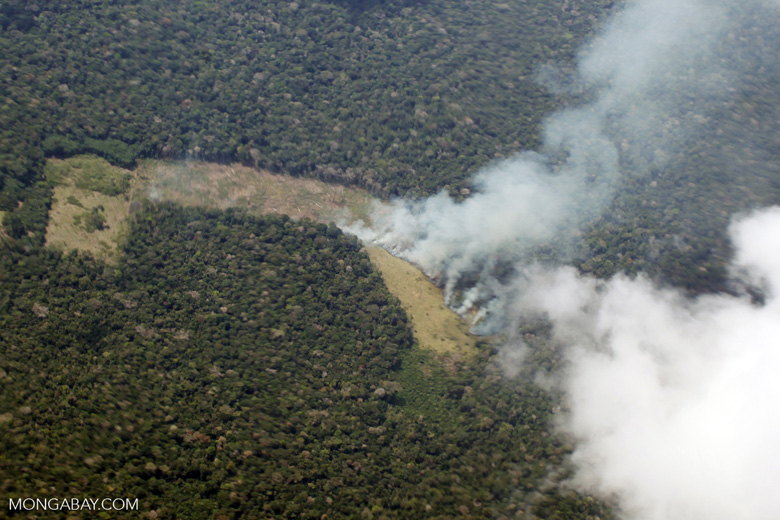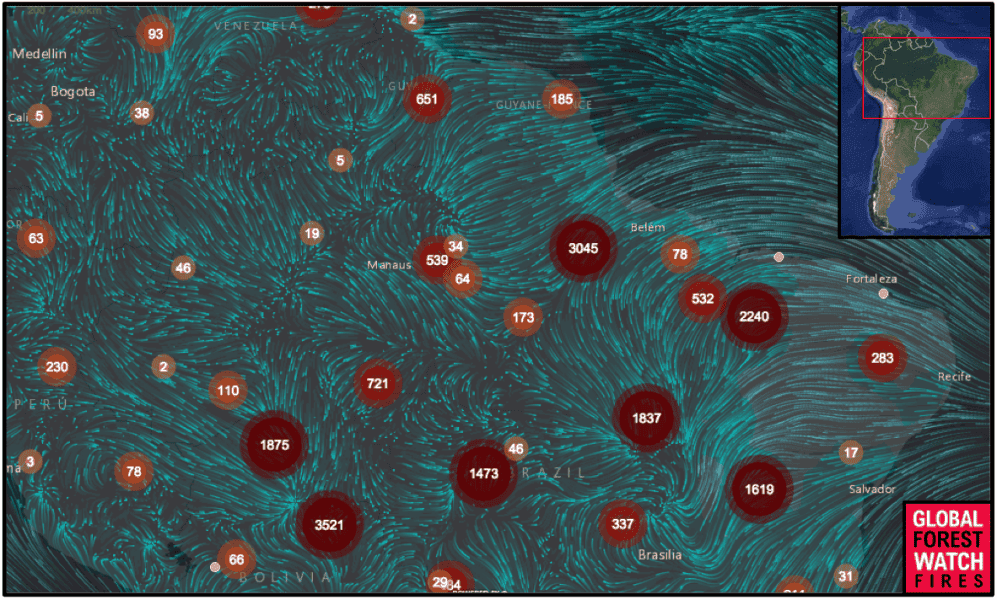- Forest clearing is often done through burning, which releases harmful particulates into the atmosphere.
- From 2001 to 2012, deforestation rates dropped 40 percent in the amazon, correlating to a 30 percent lower particulate emissions rate.
- Researchers calculated this deforestation reduction resulted in 1,700 fewer deaths per year due to particulate-caused cardiopulmonary disease and lung cancer.
Forest preservation brings with it a plethora of possible benefits, from protecting wildlife habitat and stemming the release of carbon into an already-overloaded atmosphere, to the provision of resources for forest-dependent human communities. Keeping forests around may be good for human health, as well. New research published this week in Nature Geoscience indicates that a dip in Amazon deforestation may have prevented the deaths of 1,700 people per year.
When deforestation occurs, trees and other woody organic material – collectively referred to as “biomass” – is often burned, releasing particulates, ozone, carbon compounds, and other pollutants into the atmosphere. This can be hazardous when inhaled, as demonstrated by the ongoing public health crisis caused by the burning of Indonesia’s forests.
But unlike Indonesia, the Amazon has been trending downward in its deforestation-related emissions in the past 15 years. To see how this may have affected human health, researchers from institutions in Brazil, England, and the U.S. compared deforestation rates and emissions data collected between 2001 and 2012, and calculated their influence on mortality.


By analyzing satellite data, the team found that over those 12 years, deforestation dropped off by around 40 percent in Brazil. Previous research attributes this decline to policy changes and increased enforcement of regulations that made it more difficult to clear Amazon forest. (However, more recent data indicate deforestation in the Brazilian Amazon may again be on the rise.)
Data collected by satellites and ground-based sensors indicated that emissions levels also fell. The researchers found that levels of the unhealthiest types of particulate matter – particles less than 2.5 microns in diameter — were 30 percent lower in years with lower deforestation rates.
The team then calculated the effect of this lowered particulate level on premature mortality rates caused by cardiopulmonary disease and lung cancer.
They estimate that the region’s 40 percent reduction in deforestation correlates to 1,700 fewer deaths every year.
“The study shows for the first time that reducing deforestation results in improved air quality, which in turn leads to a reduction in the number of deaths due to exposure to atmospheric pollution in most of South America,” said coauthor Paulo Artaxo, with the University of São Paulo.
The authors urge public policy shifts toward further reductions in deforestation, and the cessation of slash-and-burn forest clearing in the Amazon.
Citation:
- Reddington, C. L., Butt, E. W., Ridley, D. A., Artaxo, P., Morgan, W. T., Coe, H., & Spracklen, D. V. (2015). Air quality and human health improvements from reductions in deforestation-related fire in Brazil. Nature Geoscience, 8(10), 768-771.
